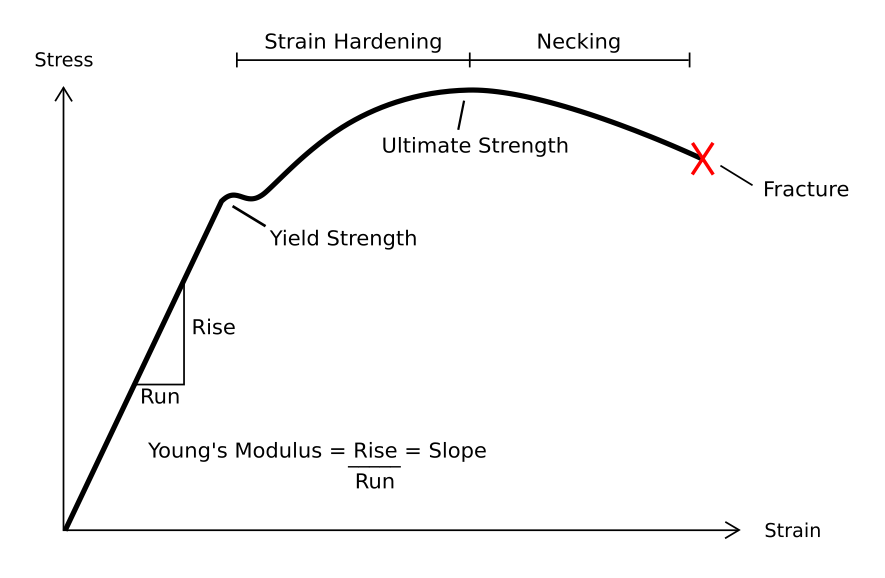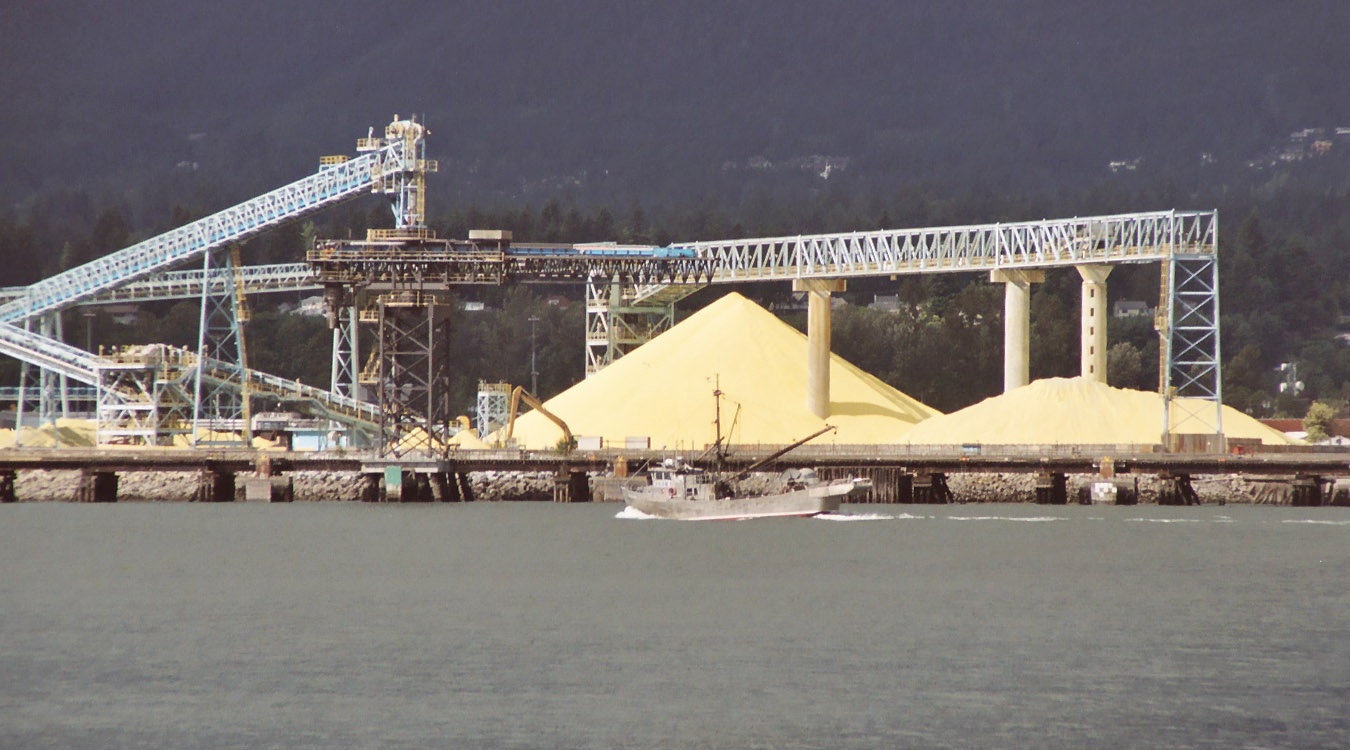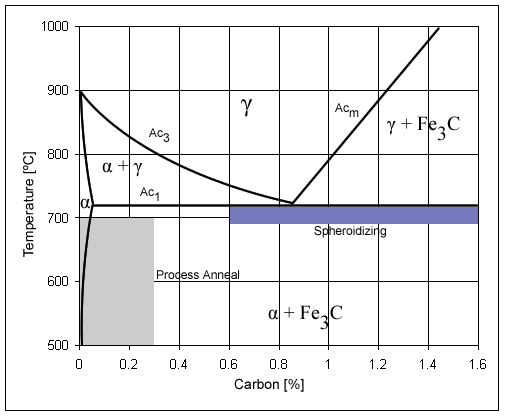|
Rule Based Analysis Of Extrusion Process
Extrusion is a plastic deformation process in which raw material (billet) is forced to flow by compression through the die opening of a smaller cross-section area. The extrusion process is divided in two basic types: direct extrusion and indirect extrusion. In direct extrusion the billet is pushed through the die with ram pressure, whereas in indirect extrusion a die moves relative to the container. Rule based analysis of extrusion process would help to determine a set of rules essential for consideration while designing a product, or even during cost estimation of a product. Some rules are discussed below. Material Material of the profile to be extruded plays an essential role in determining process parameters and potential limitations of a process. For example, minimum thickness of extruded carbon steel sheet is 3mm whereas same sheet of aluminium can be extruded into minimum sheet thicknesses of 1mm. A variety of materials such as Carbon steel, aluminium, titanium, magnesiu ... [...More Info...] [...Related Items...] OR: [Wikipedia] [Google] [Baidu] |
Extrusion
Extrusion is a process used to create objects of a fixed cross section (geometry), cross-sectional profile by pushing material through a Die (manufacturing), die of the desired cross-section. Its two main advantages over other manufacturing processes are its ability to create very complex cross-sections; and to work materials that are brittle, because the material encounters only compressive stress, compressive and shear stress, shear stresses. It also creates excellent surface finish and gives considerable freedom of form in the design process. Drawing (manufacturing), Drawing is a similar process, using the tensile strength of the material to pull it through the die. It limits the amount of change that can be performed in one step, so it is limited to simpler shapes, and multiple stages are usually needed. Drawing is the main way to produce wire. Metal Bar stock, bars and tube (fluid conveyance), tubes are also often drawn. Extrusion may be continuous (theoretically producin ... [...More Info...] [...Related Items...] OR: [Wikipedia] [Google] [Baidu] |
Deformation (engineering)
In engineering, deformation (the change in size or shape of an object) may be ''elastic'' or ''plastic''. If the deformation is negligible, the object is said to be ''rigid''. Main concepts Occurrence of deformation in engineering applications is based on the following background concepts: * ''Displacements'' are any change in position of a point on the object, including whole-body translations and rotations ( rigid transformations). * ''Deformation'' are changes in the relative position between internals points on the object, excluding rigid transformations, causing the body to change shape or size. * ''Strain'' is the ''relative'' ''internal'' deformation, the dimensionless change in shape of an infinitesimal cube of material relative to a reference configuration. Mechanical strains are caused by mechanical stress, ''see stress-strain curve''. The relationship between stress and strain is generally linear and reversible up until the yield point and the deformation is ... [...More Info...] [...Related Items...] OR: [Wikipedia] [Google] [Baidu] |
Raw Material
A raw material, also known as a feedstock, unprocessed material, or primary commodity, is a basic material that is used to produce goods, finished goods, energy, or intermediate materials/Intermediate goods that are feedstock for future finished products. As feedstock, the term connotes these materials are bottleneck assets and are required to produce other products. The term raw material denotes materials in unprocessed or minimally processed states such as raw latex, crude oil, cotton, coal, raw biomass, iron ore, plastic, air, lumber, logs, and water. The term secondary raw material denotes waste material which has been recycled and injected back into use as productive material. Raw material in supply chain Supply chains typically begin with the acquisition or extraction of raw materials. For example, the European Commission notes that food supply chains commence in the agricultural phase of food production. A 2022 report on changes affecting international trade noted that ... [...More Info...] [...Related Items...] OR: [Wikipedia] [Google] [Baidu] |
Ram Pressure
Ram pressure is a pressure exerted on a body moving through a fluid medium, caused by relative bulk motion of the fluid rather than random thermal motion. It causes a drag (physics), drag force to be exerted on the body. Ram pressure is given in tensor form as :P_\text= \rho u_i u_j, where \rho is the density of the fluid; P_\text is the momentum flux per second in the i direction through a surface with normal in the j direction. u_i,u_j are the components of the fluid velocity in these directions. The total Cauchy stress tensor \sigma_ is the sum of this ram pressure and the isotropic thermal pressure (in the absence of viscosity). In the simple case when the relative velocity is normal to the surface, and momentum is fully transferred to the object, the ram pressure becomes :P_\text = 1/2 \rho u^2. Derivation The Lagrangian and Eulerian specification of the flow field, Eulerian form of the Cauchy momentum equation for a fluid is :\rho\frac = -\vec \nabla p - \rho(\vec u ... [...More Info...] [...Related Items...] OR: [Wikipedia] [Google] [Baidu] |
Cost Estimation
A cost estimate is the approximation of the cost of a program, project, or operation. The cost estimate is the product of the cost estimating process. The cost estimate has a single total value and may have identifiable component values. A problem with a cost overrun can be avoided with a credible, reliable, and accurate cost estimate. A cost estimator is the professional who prepares cost estimates. There are different types of cost estimators, whose title may be preceded by a modifier, such as building estimator, or electrical estimator, or chief estimator. Other professionals such as quantity surveyors and cost engineers may also prepare cost estimates or contribute to cost estimates. In the US, according to the Bureau of Labor Statistics, there were 185,400 cost estimators in 2010. There are around 53,000 professional quantity surveyors working in the UK. Overview The U.S. Government Accountability Office (GAO) defines a cost estimate as "the summation of individual cost el ... [...More Info...] [...Related Items...] OR: [Wikipedia] [Google] [Baidu] |
Carbon Steel
Carbon steel is a steel with carbon content from about 0.05 up to 2.1 percent by weight. The definition of carbon steel from the American Iron and Steel Institute (AISI) states: * no minimum content is specified or required for chromium, cobalt, molybdenum, nickel, niobium, titanium, tungsten, vanadium, zirconium, or any other element to be added to obtain a desired alloying effect; * the specified minimum for copper does not exceed 0.40%; * or the specified maximum for any of the following elements does not exceed: manganese 1.65%; silicon 0.60%; and copper 0.60%. As the carbon content percentage rises, steel has the ability to become harder and stronger through heat treating; however, it becomes less ductile. Regardless of the heat treatment, a higher carbon content reduces weldability. In carbon steels, the higher carbon content lowers the melting point. The term may be used to reference steel that is not stainless steel; in this use carbon steel may include alloy st ... [...More Info...] [...Related Items...] OR: [Wikipedia] [Google] [Baidu] |
Aluminium
Aluminium (or aluminum in North American English) is a chemical element; it has chemical symbol, symbol Al and atomic number 13. It has a density lower than that of other common metals, about one-third that of steel. Aluminium has a great affinity towards oxygen, passivation (chemistry), forming a protective layer of aluminium oxide, oxide on the surface when exposed to air. It visually resembles silver, both in its color and in its great ability to reflect light. It is soft, magnetism, nonmagnetic, and ductility, ductile. It has one stable isotope, 27Al, which is highly abundant, making aluminium the abundance of the chemical elements, 12th-most abundant element in the universe. The radioactive decay, radioactivity of aluminium-26, 26Al leads to it being used in radiometric dating. Chemically, aluminium is a post-transition metal in the boron group; as is common for the group, aluminium forms compounds primarily in the +3 oxidation state. The aluminium cation Al3+ ... [...More Info...] [...Related Items...] OR: [Wikipedia] [Google] [Baidu] |
Titanium
Titanium is a chemical element; it has symbol Ti and atomic number 22. Found in nature only as an oxide, it can be reduced to produce a lustrous transition metal with a silver color, low density, and high strength, resistant to corrosion in sea water, aqua regia, and chlorine. Titanium was discovered in Cornwall, Great Britain, by William Gregor in 1791 and was named by Martin Heinrich Klaproth after the Titans of Greek mythology. The element occurs within a number of minerals, principally rutile and ilmenite, which are widely distributed in the Earth's crust and lithosphere; it is found in almost all living things, as well as bodies of water, rocks, and soils. The metal is extracted from its principal mineral ores by the Kroll and Hunter processes. The most common compound, titanium dioxide (TiO2), is a popular photocatalyst and is used in the manufacture of white pigments. Other compounds include titanium tetrachloride (TiCl4), a component of smoke screens and cata ... [...More Info...] [...Related Items...] OR: [Wikipedia] [Google] [Baidu] |
Magnesium
Magnesium is a chemical element; it has Symbol (chemistry), symbol Mg and atomic number 12. It is a shiny gray metal having a low density, low melting point and high chemical reactivity. Like the other alkaline earth metals (group 2 of the periodic table), it occurs naturally only in combination with other elements and almost always has an oxidation state of +2. It reacts readily with air to form a thin Passivation (chemistry), passivation coating of magnesium oxide that inhibits further corrosion of the metal. The free metal burns with a brilliant-white light. The metal is obtained mainly by electrolysis of magnesium Salt (chemistry), salts obtained from brine. It is less dense than aluminium and is used primarily as a component in strong and lightweight magnesium alloy, alloys that contain aluminium. In the cosmos, magnesium is produced in large, aging stars by the sequential addition of three Helium nucleus, helium nuclei to a carbon nucleus. When such stars explo ... [...More Info...] [...Related Items...] OR: [Wikipedia] [Google] [Baidu] |
Polyvinyl Chloride
Polyvinyl chloride (alternatively: poly(vinyl chloride), colloquial: vinyl or polyvinyl; abbreviated: PVC) is the world's third-most widely produced synthetic polymer of plastic (after polyethylene and polypropylene). About 40 million tons of PVC are produced each year. PVC comes in rigid (sometimes abbreviated as RPVC) and flexible forms. Rigid PVC is used in construction for pipes, doors and windows. It is also used in making plastic bottles, packaging, and bank or membership cards. Adding plasticizers makes PVC softer and more flexible. It is used in plumbing, electrical cable insulation, flooring, signage, phonograph records, inflatable products, and in rubber substitutes. With cotton or linen, it is used in the production of canvas. Polyvinyl chloride is a white, brittle solid. It is soluble in ketones, chlorinated solvents, dimethylformamide, THF and DMAc. Discovery PVC was synthesized in 1872 by German chemist Eugen Baumann after extended investigation and experimenta ... [...More Info...] [...Related Items...] OR: [Wikipedia] [Google] [Baidu] |
Cost Efficiency
Cost efficiency (or cost optimality), in the context of parallel computer algorithms, refers to a measure of how effectively parallel computing can be used to solve a particular problem. A parallel algorithm is considered cost efficient if its asymptotic running time multiplied by the number of processing units involved in the computation is comparable to the running time of the best sequential algorithm. For example, an algorithm that can be solved in O(n) time using the best known sequential algorithm and O\left(\frac\right) in a parallel computer with p processors will be considered cost efficient. Cost efficiency also has applications to human services Human services is an interdisciplinary field of study with the objective of meeting human needs through an applied knowledge base, focusing on prevention as well as remediation of problems, and maintaining a commitment to improving the overall qu .... References *Advanced Computer Architectures: A Design Space Approach, D. ... [...More Info...] [...Related Items...] OR: [Wikipedia] [Google] [Baidu] |
Radius
In classical geometry, a radius (: radii or radiuses) of a circle or sphere is any of the line segments from its Centre (geometry), center to its perimeter, and in more modern usage, it is also their length. The radius of a regular polygon is the line segment or distance from its center to any of its Vertex (geometry), vertices. The name comes from the Latin ''radius'', meaning ray but also the spoke of a chariot wheel.Definition of Radius at dictionary.reference.com. Accessed on 2009-08-08. The typical abbreviation and mathematical symbol for radius is ''R'' or ''r''. By extension, the diameter ''D'' is defined as twice the radius:Definition of radius at mathwords.com. ... [...More Info...] [...Related Items...] OR: [Wikipedia] [Google] [Baidu] |








